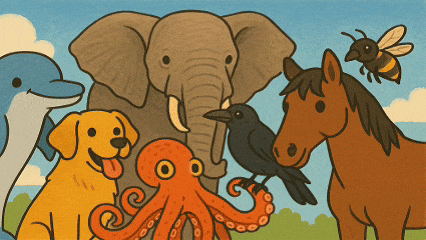
 Popular Search
Popular Search


To understand their emotions and thoughts (emotional connection)

To solve environmental or ecological problems (practicality)

To learn about their unique behaviors and instincts (curiosity)

To train or work with them more effectively (utility)

Urban or domestic settings (pets, city animals)

Wilderness or natural habitats (wild animals)

Marine or aquatic environments (sea creatures)

Agricultural or farm settings (livestock)

Deep emotional bonding (companionship)

Collaborative problem-solving (teamwork)

Observational learning (study and research)

Playful and fun interactions (entertainment)

Intelligence and problem-solving skills (e.g., dolphins, crows)

Loyalty and companionship (e.g., dogs, cats)

Strength and utility (e.g., horses, elephants)

Mystery and uniqueness (e.g., octopuses, owls)

By improving animal welfare and rights (ethics)

By advancing scientific research and knowledge (science)

By enhancing human-animal collaboration (industry)

By fostering empathy and environmental awareness (education)


 You May Like
You May Like












